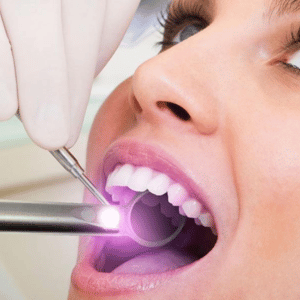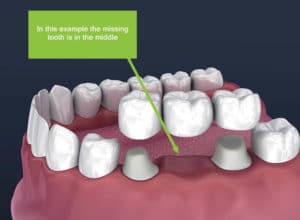The Difference Between Cosmetic and Restorative Dental Treatments
 Welcome to our comprehensive guide that delves into the captivating world of dental treatments. Maintaining a healthy and radiant smile is of paramount importance, and the realm of dentistry offers a diverse array of procedures to cater to this objective. In this blog, we embark on an exploration of the fundamental disparities between cosmetic and restorative dental treatments. By shedding light on their purposes, advantages, and illustrative examples, we aim to provide you with a profound understanding of these two distinct branches of dentistry.
Welcome to our comprehensive guide that delves into the captivating world of dental treatments. Maintaining a healthy and radiant smile is of paramount importance, and the realm of dentistry offers a diverse array of procedures to cater to this objective. In this blog, we embark on an exploration of the fundamental disparities between cosmetic and restorative dental treatments. By shedding light on their purposes, advantages, and illustrative examples, we aim to provide you with a profound understanding of these two distinct branches of dentistry.
Cosmetic Dental Treatments:
Cosmetic dental treatments occupy a significant niche in the field of dentistry as they primarily concentrate on augmenting the visual appeal of teeth, gums, and the overall smile. Unlike restorative treatments that address functional and health concerns, cosmetic procedures are elective in nature. Here, we unravel the key aspects that distinguish cosmetic treatments:
Purpose:
Cosmetic treatments are meticulously designed to elevate the aesthetic aspect of your smile. By remedying a myriad of imperfections such as tooth discoloration, misalignment, gaps, chips, and irregularities, these procedures provide an avenue for enhancing the visual allure of your teeth.
Benefits:
- Heightened Self-Confidence: By skillfully attending to aesthetic concerns, cosmetic treatments can instill a newfound self-assurance, enabling you to exude radiance and expressiveness through an
 uninhibited smile.
uninhibited smile. - Revitalized Smile: The transformative effects of cosmetic procedures encompass the attainment of a more symmetrical, radiant, and visually captivating smile.
- Minimally Invasive Approaches: Many cosmetic interventions employ techniques that prioritize patient comfort, incorporating minimally invasive procedures that reduce discomfort and expedite the recovery process.
Examples of Cosmetic Dental Treatments:
- Teeth Whitening: This non-invasive procedure employs cutting-edge techniques to illuminate your teeth by eradicating unsightly stains and discoloration, unveiling a brighter and more dazzling smile.
- Dental Veneers: Crafted from either porcelain or composite materials, these remarkably thin shells are expertly bonded to the front surface of your teeth, effectively concealing imperfections and bestowing upon your smile a flawless appearance.
- Tooth-Colored Fillings: Made from composite resin, these fillings seamlessly blend with your natural tooth color, effectively restoring teeth affected by cavities while maintaining a natural appearance.
- Porcelain Crowns and Bridges: These custom-made restorations are used to restore damaged or missing teeth. Porcelain crowns cover and protect a compromised tooth, while bridges replace missing teeth by anchoring to adjacent teeth.
- Fixed Bridge: A fixed bridge
 is a permanent dental restoration that replaces one or more missing teeth by attaching artificial teeth to adjacent natural teeth, restoring functionality and aesthetics.
is a permanent dental restoration that replaces one or more missing teeth by attaching artificial teeth to adjacent natural teeth, restoring functionality and aesthetics. - Removable Bridge: Also known as partial dentures, removable bridges replace multiple missing teeth and can be easily taken out for cleaning and maintenance.
Restorative Dental Treatments
Restorative dental treatments emerge as a vital branch of dentistry, encompassing procedures that aim to repair and reinstate the functionality, structure, and overall health of damaged or compromised teeth. These interventions address dental issues that can have far-reaching consequences on your overall oral well-being. In this section, we navigate the distinctive realm of restorative treatments:
Purpose:
Restorative treatments undertake the formidable task of rejuvenating teeth that have suffered damage, decay, or loss. By effectively replacing missing teeth, remedying structural impairments, and combatting oral health issues, restorative procedures endeavor to reinstate your oral functionality and ensure the longevity of your dental health.
Benefits:
- Enhanced Oral Health: The primary objective of restorative procedures lies in confronting decay, infections, and structural deficiencies, ultimately promoting optimal oral health and preventing further complications.

- Restored Functionality: By meticulously addressing dental issues, restorative treatments reinstate the proper biting, chewing, and speaking capabilities, facilitating a seamless and comfortable oral experience.
- Long-Term Durability: Restorative interventions such as dental implants and crowns offer remarkable longevity, serving as enduring solutions that withstand the test of time when accompanied by diligent oral care.
Examples of Restorative Dental Treatments:
- Root Canal: When a tooth's pulp becomes infected or inflamed, a root canal procedure is performed to remove the damaged pulp, clean the root canal, and seal it, effectively saving the tooth and preventing further infection.
- Dental Crowns: These tooth-shaped caps are meticulously placed over damaged or weakened teeth, encasing them to provide structural support, restore functionality, and revitalize their appearance.
- Dental Implants: A marvel of modern dentistry, dental implants involve the surgical placement of titanium posts into the jawbone, serving as artificial tooth roots. These posts provide a robust foundation for dental restorations, effectively replacing missing teeth and conferring a natural and seamless smile.
- Dentures: Offering a versatile solution for multiple missing teeth, dentures are removable prosthetic devices that expertly restore both chewing and speaking functions, enhancing your quality of life and oral well-being.
Conclusion:
Acquiring a comprehensive understanding of the divergence between cosmetic and restorative dental treatments is a vital component in making informed decisions regarding your oral health and well-being. While cosmetic treatments dedicate their efforts to augment aesthetic appeal and bolstering self-confidence, restorative treatments possess the noble objective of rectifying dental issues, restoring functionality, and safeguarding oral health. To embark on this transformative journey, it is prudent to consult with a dental professional who can skillfully evaluate your unique requirements and propose the most suitable treatments. Embrace the realization that a vibrant smile encompasses both beauty and functionality, as it plays a pivotal role in contributing to your overall physical and emotional well-being.
Ready to find out more?
Contact us for more information!
